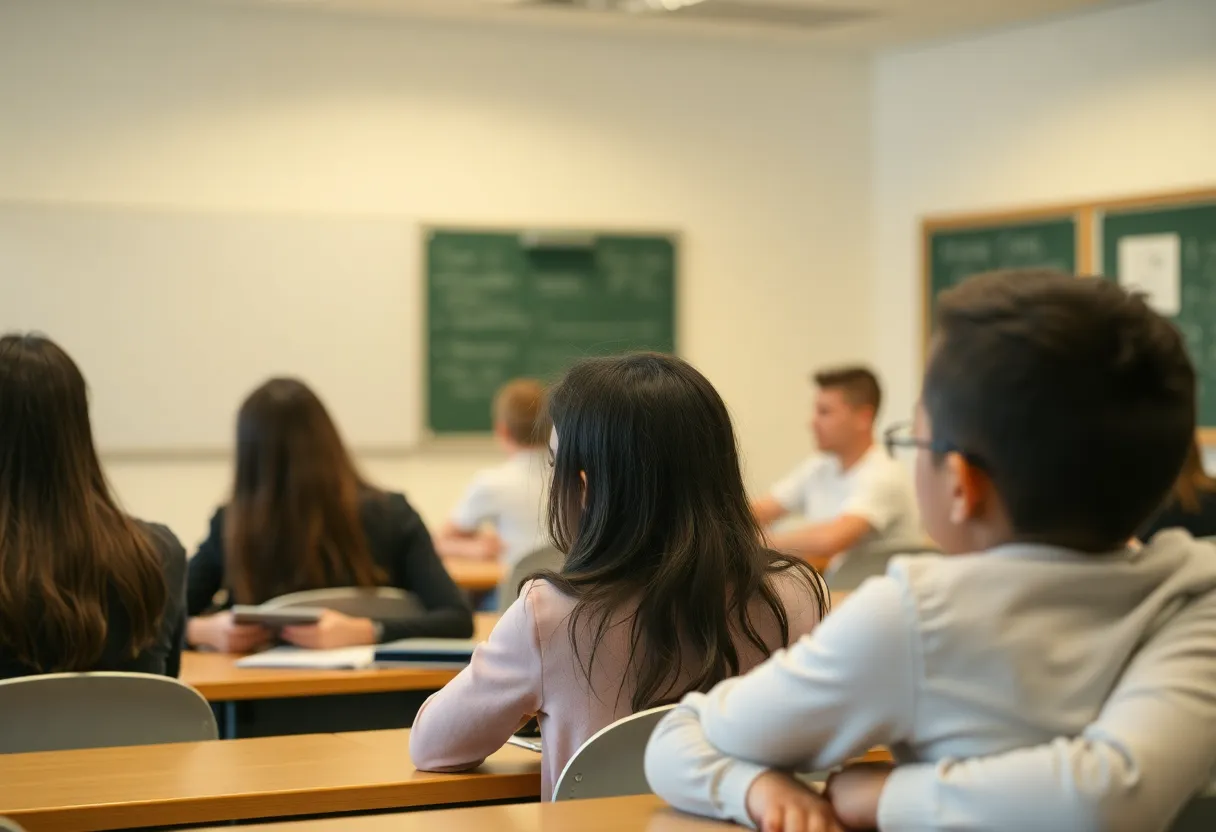News Summary
The Los Angeles Unified School District has introduced a complete ban on cellphones, smartwatches, and personal technology during school hours to enhance focus and address mental health concerns. The policy, effective February 18, prohibits device usage during lunch and passing periods, with exceptions for students with disabilities. While some parents and educators welcome the initiative, others express concern about its impact on students reliant on technology for learning and social connectivity. The decision is part of a broader trend reevaluating the influence of personal devices in educational settings.
Los Angeles – As of February 18, 2024, students in the Los Angeles Unified School District (LAUSD) are now prohibited from using cellphones, smartwatches, earbuds, and other personal technology for the entirety of the school day. This decision, made by the LAUSD Board in June 2024, expands existing restrictions on phone usage to include lunch and passing periods, with the stated goals of enhancing classroom focus and mitigating the influences of social media on student mental health.
The main motivations for the ban revolve around escalating concerns regarding how smartphones contribute to issues related to bullying, distractions from lessons, and overall mental well-being among youth. In particular, many board members expressed the need for a more constructive educational environment free from the pervasive distractions that personal devices can cause.
The ban makes an exception for the more than 63,000 students with disabilities within the district. These students can still use their cellphones under their Individualized Education Programs (IEPs) or Section 504 Plans, which allow for usage to assist in managing specific needs such as medical devices, anxiety, or emotional regulation. This exemption emphasizes the importance of technology for certain students while attempting to enforce discipline for the general student body.
Families reported that their children with disabilities often depend on their cellphones to aid in medical management and social connectivity. However, to take advantage of the exceptions, families may need to proactively communicate with school officials regarding their child’s individual needs, as the existing regulations stipulate that such rights must be asserted rather than automatically applied.
Critics of the cellphone ban express concern that it may inadvertently disadvantage students who rely on technology to enhance their learning experiences and social interactions. Advocacy groups point to the need for a balanced approach to cellphone usage, emphasizing that students who benefit from assistive technologies should not be sidelined due to broader policies.
Moreover, the Individuals with Disabilities Education Act (IDEA) guarantees students with disabilities a right to a “free appropriate public education.” However, access to assistive technology is not guaranteed under the new cellphone restrictions, leading many to question how these policies align with existing educational rights.
LAUSD’s new policy mandates that all students—unless exempted—store their phones in magnetically sealed pouches or backpacks while in school. Initial feedback from teachers and students has been indicating some positive impacts, with reports of increased attention and engagement in classroom activities. However, there have been accounts of students attempting to circumvent the ban by using decoys or other tools to access their phones during instructional time.
Parents have expressed mixed feelings about the policy. While some believe it could foster a more focused educational environment, others have raised concerns about their children’s lack of access to phones during school hours, particularly regarding emergency situations.
The implementation of this cellphone ban comes amid ongoing debates about the mental health impacts of technology on adolescents. Research studies offer varied conclusions as to whether restricting cellphone use contributes positively to mental well-being among students, with some studies observing no significant improvements in overall device usage.
As LAUSD moves forward with this policy, families of students, especially those with disabilities, are encouraged to engage in dialogue with school officials to navigate the new landscape of cellphone regulations. This situation reflects a growing trend within educational institutions to reevaluate the role of personal technology in the development of young learners.
The cellphone ban by LAUSD raises essential questions about the balance between eliminating distractions and accommodating the needs of all students. The district’s future policies will likely continue to evolve as they strive to create an optimal learning environment.
Deeper Dive: News & Info About This Topic
HERE Resources
New Cell Phone Policy Boosts Student Engagement at Bear Creek High School
Additional Resources
- LAist: LAUSD Cell Phone Ban
- Wikipedia: Cell Phone
- Los Angeles Times: LAUSD Cellphone Ban Updates
- Google Search: Cellphone Use in Schools
- NBC Los Angeles: LAUSD Cell Phone Ban
- Google Scholar: Impact of Cellphones on Education
- ABC7: LAUSD Cellphone Ban Details
- Encyclopedia Britannica: Technology in Education
- CBS News: LAUSD Cellphone Ban Overview
- Google News: LAUSD Cellphone Policy
Author: STAFF HERE CLEVELAND WRITER
The CLEVELAND STAFF WRITER represents the seasoned team at HERECleveland.com, your premier source for actionable local news and information in Cleveland, Cuyahoga County, and beyond, delivering "news you can use" with in-depth coverage of product reviews for personal and business needs, local business directories, politics, real estate trends, neighborhood insights, and state news impacting the region—backed by years of expert reporting and robust community input, including local press releases and business updates, while providing top reporting on high-profile events like the Rock and Roll Hall of Fame inductions, Cleveland International Film Festival, and holiday parades, alongside key organizations such as the Cleveland Clinic, Cleveland Orchestra, and Great Lakes Science Center, plus leading businesses in manufacturing and healthcare like Sherwin-Williams and University Hospitals, and as part of the broader HERE network including HEREDayton.com, offering comprehensive, credible insights into Ohio's vibrant landscape. HERE Cleveland HERE Dayton





